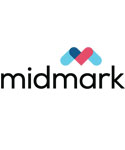References
1. Smith RM. Smith’s anesthesia for infants and children. St. Louis: Mosby; 1959.
2. Epstein M, Rodan I, Griffenhagen G, et al. 2015 AAHA/AAFP pain management guidelines for dogs and cats. J Am Anim Hosp Assoc 2015; 51:67–84.
3. American Association of Feline Practitioners. 2018 AAFP Feline Anesthesia Guidelines. Available at: catvets.com/guidelines/practice-guidelines/anesthesia-guidelines. Accessed December 5, 2019.
4. Brodbelt DC, Pfeiffer DU, Young LE, et al. Risk factors for anaestheticrelated death in cats: results from the confidential enquiry into perioperative small animal fatalities (CEPSAF). Br J Anaesth 2007:99:617–23.
5. Matthews NS, Mohn TJ, Yang M, et al. Factors associated with anesthetic-related death in dogs and cats in primary care veterinary hospitals. J Am Vet Med Assoc 2017;250:655–66.
6. Brodbelt DC, Pfeiffer DU, Young LE, et al. Results of the confidential enquiry into perioperative small animal fatalities regarding risk factors for anesthetic-related death in dogs. J Am Vet Med Assoc 2008;233:1096–104.
7. Brodbelt DC, Blissitt KJ, Hammond RA, et al. The risk of death: the confidential enquiry into perioperative small animal fatalities. Vet Anaesth Analg 2008;35:365–73.
8. Coleman AE, Shepard MK, Schmiedt CW, et al. Effects of orally administered enalapril on blood pressure and hemodynamic response to vasopressors during isoflurane anesthesia in healthy dogs. Vet Anaesth Analg 2016;3:482–94.
9. Seahorn J, Robertson S. Concurrent medications and their impact on anesthetic management. Vet Forum 2002;119:50–67.
10. Joubert KE. Pre-anaesthetic screening of geriatric dogs. J S Afr Vet Assoc 2007;78:31–5.
11. Jones SJ, Mama KR, Brock NK, et al. Hyperkalemia during general anesthesia in two Greyhounds. J Am Vet Med Assoc 2019;254:1329–34.
12. Robinson EP, Sams RA, Muir WW. Barbiturate anesthesia in greyhound and mixed-breed dogs: comparative cardiopulmonary effects, anesthetic effects, and recovery rates. Am J Vet Res 1986;47:2105–12.
13. Washington State University Clinical Pharmacology Laboratory. Drugs that have been documented to cause problems in dogs with the MDR1 mutation. Available at: https://vcpl.vetmed.wsu.edu/problem-drugs. Accessed December 5, 2019.
14. Gruenheid M, Aarnes TK, McLoughlin MA, et al. Risk of anesthesia-related complications in brachycephalic dogs. J Am Vet Med Assoc 2018;253:301–6.
15. Gough A, Thomas A. Breed predispositions to disease in dogs and cats. Oxford (UK): Blackwell Publishing Ltd.; 2004:44–170.
16. Pascoe PJ, Pypendop BH. Comparative anesthesia and analgesia of dogs and cats. In: Lumb & Jones veterinary anesthesia & analgesia. 5th ed. Ames (IA): John Wiley & Sons; 2015:723–30.
17. US Food and Drug Administration. FDA investigation into potential link between certain diets and canine dilated cardiomyopathy. Available at: https://www.fda.gov/animal-veterinary/outbreaks-and-advisories/fda-investigation-potential-link-between-certain-diets-and-canine-dilated-cardiomyopathy. Accessed December 5, 2019.
18. Brodbelt D. Perioperative mortality in small animal anesthesia. Vet J 2009;182:152–61.
19. Lerche P, Muir WW III, Bednarski RM. Rebreathing anesthetic systems in small animal practice. J Am Vet Med Assoc 2000;217:485–92.
20. American College of Veterinary Anesthesia and Analgesia. ACVA position statements. control of waste anesthetic gas in the workplace. Available at: acvaa.org/docs/Position_Statements. Accessed December 5, 2019.
21. American Veterinary Medical Association. Pain in animals. Available at: avma.org/policies/pain-animals. Accessed December 5, 2019.
22. Reed R, Doherty T. Minimum alveolar concentration: key concepts and a review of its pharmacological reduction in dogs. Part 1. Res Vet Sci 2018; 117:266–70.
23. Berry SH. Analgesia in the perioperative period. Vet Clin North Am Small Anim Pract 2015;45:1013–2.
24. Muir WW. Physiology and pathophysiology of pain. In: Gaynor JS, Muir WW, eds. Handbook of veterinary pain management. 2nd ed. St. Louis: Mosby-Elsevier; 2009:42–56.
25. Pak DJ, Yong RJ, Kaye AD, et al. Chronification of pain:Mechanisms, current understanding and clinical implications. Curr Pain Headache Rep 2018;22:9.
26. Mathews KA. Pain assessment and general approach to management. Vet Clin North Am Small Anim Pract 2000;30:729–55.
27. Mathews K, Kronen PW, Lascelles D, et al. Guidelines for recognition, assessment and treatment of pain: WSAVA Global Pain Council. J Small Anim Pract 2014;55:E10–68.
28. Chabot-Doré AJ, Schuster DJ, Stone LS, et al. Analgesic synergy between opioid and α2-adrenoceptors. Br J Pharmacol 2015;172:388–402.
29. Niyom S, Boscan P, Twedt DC, et al. Effect of maropitant, a neurokinin-1 receptor antagonist, on the minimum alveolar concentration of sevoflurane during stimulation of the ovarian ligament in cats. Vet Anaesth Analg 2013;40:425–31.
30. Boscan P, Monnet E, Mama K, et al. Effect of maropitant, a neurokinin 1 receptor antagonist, on anesthetic requirements during noxious visceral stimulation of the ovary in dogs. Am J Vet Res 2011;72:1576–9.
31. Crociolli GC, Cassu RN, Barbero RC, et al. Gabapentin as an adjuvant for postoperative pain management in dogs undergoing mastectomy. J Vet Med Sci 2015;77(8):1011–5.
32. KuKanich B. Outpatient oral analgesics in dogs and cats beyond nonsteroidal antiinflammatory drugs: an evidence-based approach. Vet Clin North Am Small Anim Pract. 2013 Sep;43(5):1109–25.
33. Schütter AF, Tünsmeyer J, Kästner SBR. Influence of tramadol on acute thermal and mechanical cutaneous nociception in dogs. Vet Anaesth Analg 2017;44:309–16.
34. Pypendop BH, Siao KT, Ilkiw JE. Effects of tramadol hydrochloride on the thermal threshold in cats. Am J Vet Res 2009;70:1465–70.
35. Brondani JT, Loureiro Luna SP, Beier SL, et al. Analgesic efficacy of perioperative use of vedaprofen, tramadol or their combination in cats undergoing ovariohysterectomy. J Feline Med Surg 2009;11:420–9.
36. Porters N, Bosmans T, Debille M, et al. Sedative and antinociceptive effects of dexmedetomidine and buprenorphine after oral transmucosal or intramuscular administration in cats. Vet Anaesth Analg 2014;41:90–6.
37. van Haaften KA, Forsythe LRE, Stelow EA, et al. Effects of a single preappointment dose of gabapentin on signs of stress in cats during transportation and veterinary examination. J Am Vet Med Assoc 2017; 251:1175–81.
38. McNally EM, Robertson SA, Pablo LA. Comparison of time to desaturation between proxygenated and nonpreoxyenated dogs following sedation with acepromazine maleate and morphine and induction of anesthesia with Propofol. Am J Vet Res 2009;70:1333–8.
39. Mitchell SL, McCarthy R, Rudloff E, et al. Tracheal rupture associated with intubation in cats: 20 cases (1996–1998). J Am Vet Med Assoc 2000; 216:1592–5.
40. Dave MH, Koepfer N, Madjdpour C, et al. Tracheal fluid leakage in benchtop trials: comparison of static versus dynamic ventilation model with and without lubrication. J Anesth 2010;24:247–52.
41. The American Veterinary Medical Association (AVMA) Professional Liability Insurance Trust (PLIT). Available at: avmaplit.com/. Accessed December 5, 2019.
42. Grubb TL, Greene SA, Perez TE. Cardiovascular and respiratory effects, and quality of anesthesia produced by alfaxalone administered intramuscularly to cats sedated with dexmedetomidine and hydromorphone. J Feline Med Surg 2013;15:858–65.
43. Davis H, Jensen T, Johnson A, et al. 2013 AAHA/AAFP Fluid Therapy Guidelines for Dogs and Cats. J Am Anim Hosp Assoc 2013;49:149–59.
44. Haskins, S. Monitoring anesthetized patients. In: Tranquilli WJ, Thurmon JC, Grim KG, eds. Lumb and Jones’ veterinary anesthesia and analgesia. 4th ed. Ames (IA): Blackwell; 2007:86–105.
45. Kelman GR, Nunn JF. Clinical recognition of hypoxaemia under fluorescent lamps. Lancet 1966;1:1400–3.
46. Pottie RG, Dart CM, Perkins NR, et al. Effect of hypothermia on recovery from general anaesthesia in the dog. Aust Vet J 2007;85:158–62.
47. Swaim SF, Lee AH, Jughes KS. Heating pads and thermal burns in small animals. J Am Anin Hosp Assoc 1989;25:156–62.
48. Wilson DV, Evans AT. The effect of topical treatment on esophageal pH during acid reflux in dogs. Vet Anaesth Analg 2007;34:339–43.
49. Ramsey D, Fleck T, Berg T, et al. Cerenia prevents perioperative nausea and vomiting and improves recovery in dogs undergoing routine surgery. Intern J Appl Res Vet Med 2014;12:228–37.
50. Lotti F, Boscan P, Twedt D, et al. Effect of maropitant, maropitant with omeprazole and esophageal lavage on gastroesophageal reflux in anesthetized dogs [abstract]. Vet Anesth Analg 2018;45:885.e8–e9. Abstract 2018.
51. Favarato ES, Souza MV, Costa PR, et al. Evaluation of metoclopramide and ranitidine on the prevention of gastroesophageal reflux episodes in anesthetized dogs. Res Vet Sci 2012;93:466–7.
52. Zacuto AC, Marks SL, Osborn J, et al. The influence of esomeprazole and cisapride on gastroesophageal reflux during anesthesia in dogs. J Vet Intern Med 2012;26:518–25.
53. Grubb TL, Perez Jimenez TE, Pettifer GR. Senior and geriatric patients. In: Grimm KA, Lamont LA, Tranquilli WJ, et al., eds. Veterinary anesthesia and analgesia. 5th ed. Ames (IA): John Wiley & Sons; 2015:988–92.
54. IVAPM; International Veterinary Academy of Pain Management. Available at: IVAPM.org. Accessed December 5, 2019.
55. Cooley KG, Johnson RA. Veterinary anesthetic and monitoring equipment. Hoboken (NJ): John Wiley & Sons; 2018.
56. Dorsch JA, Dorsch SE. Understanding anesthetic equipment. 5th ed. Philadelphia: Lippincott Williams and Wilkins; 2008.
57. Occupational Safety and Health Administration. Waste anesthetic gases. Available at: osha.gov/SLTC/wasteanestheticgases/. Accessed December 5, 2019.
58. RECOVER Initiative. Evidence-based veterinary CPR. Available at: recoverinitiative.org/. Accessed December 5, 2019.
59. Hales B, Terblance M, Fowler R, et al. Development of medical checklists for improved quality of patient care. Int J Quality Health Care 2008;20: 22–30.





